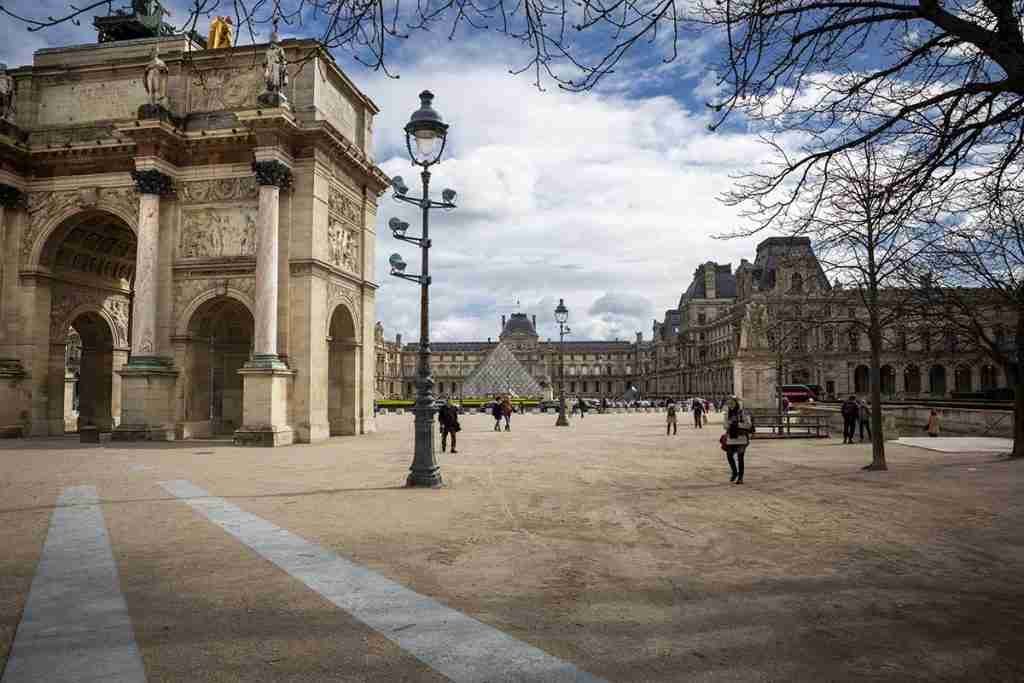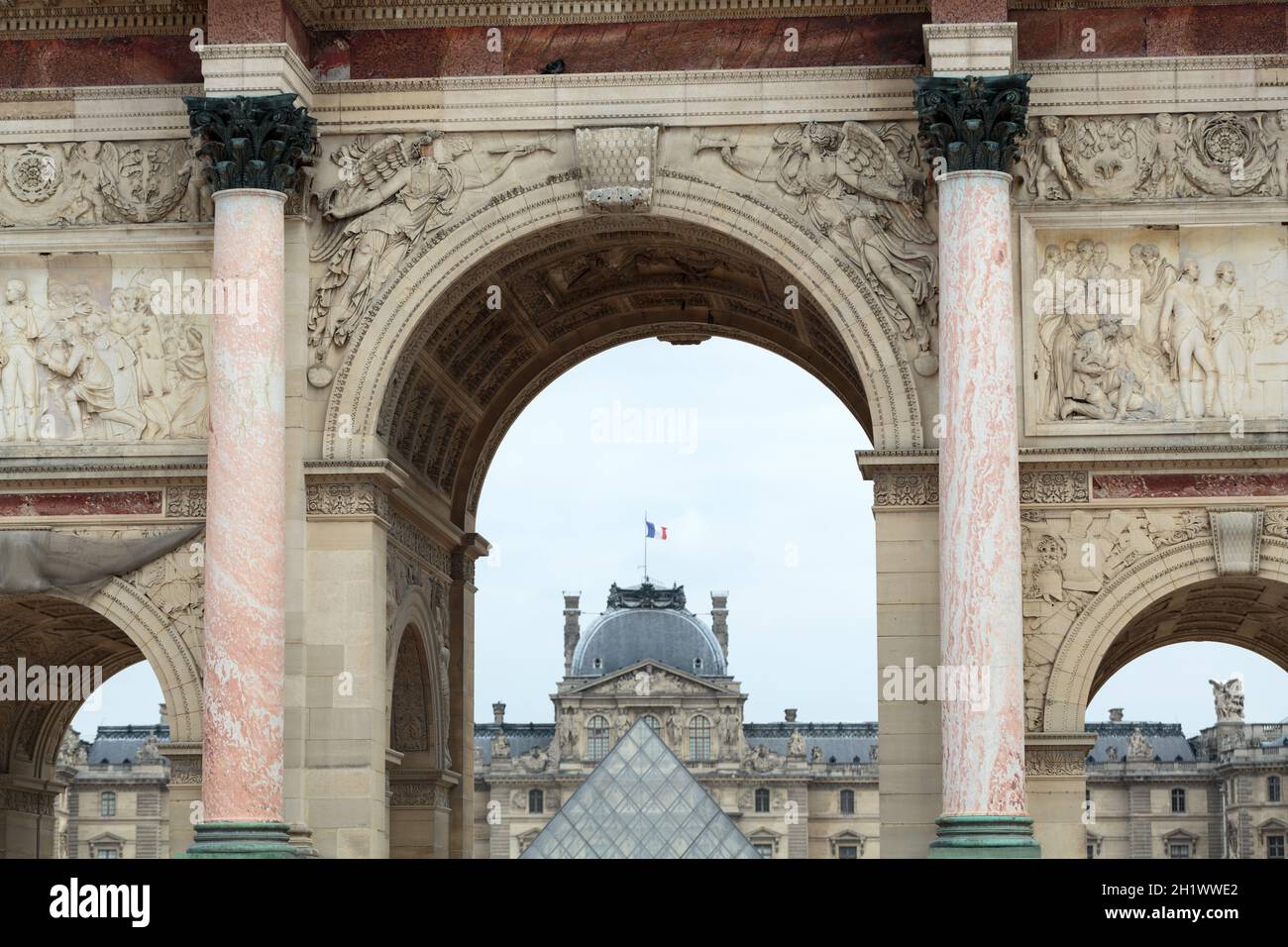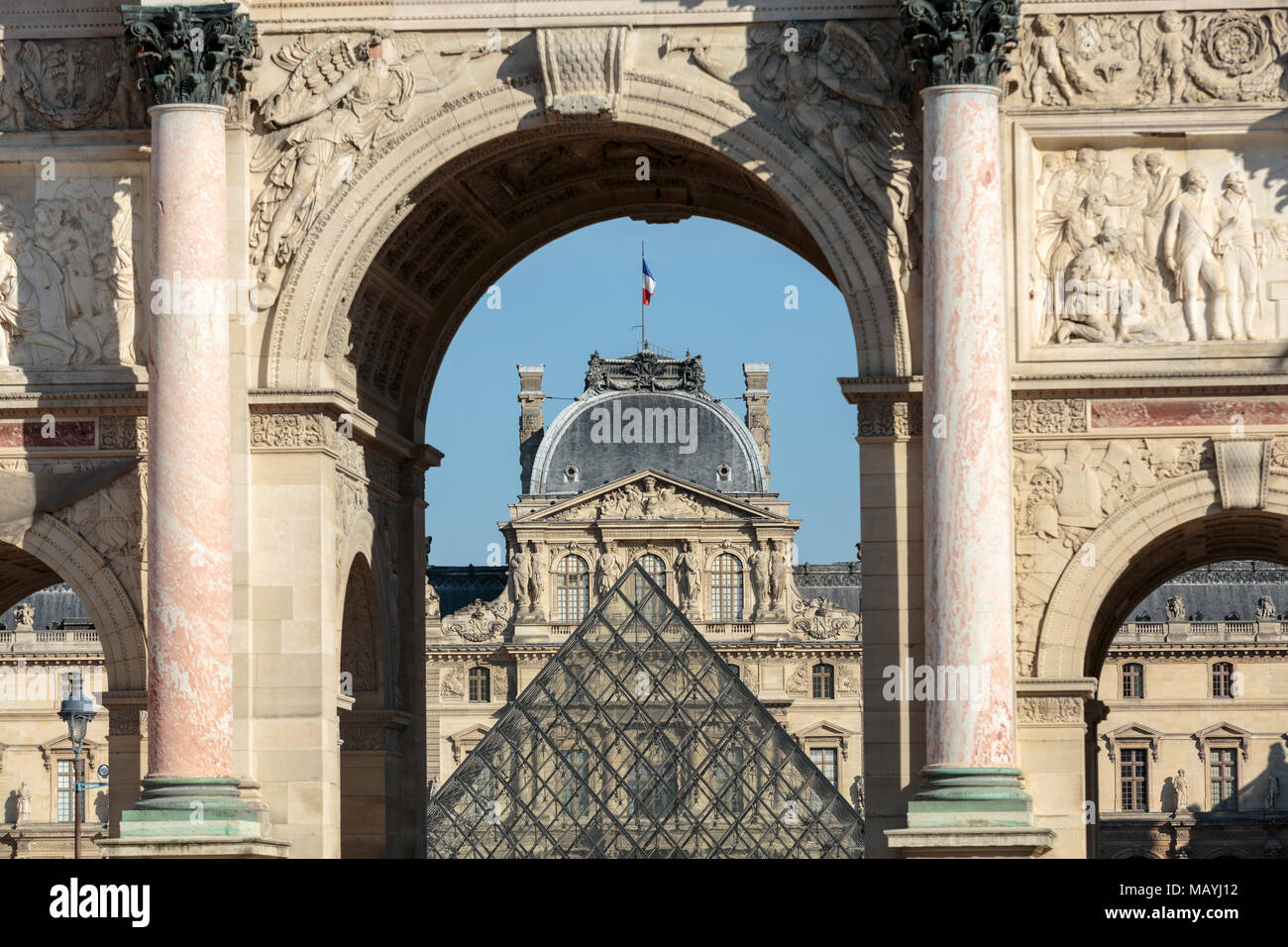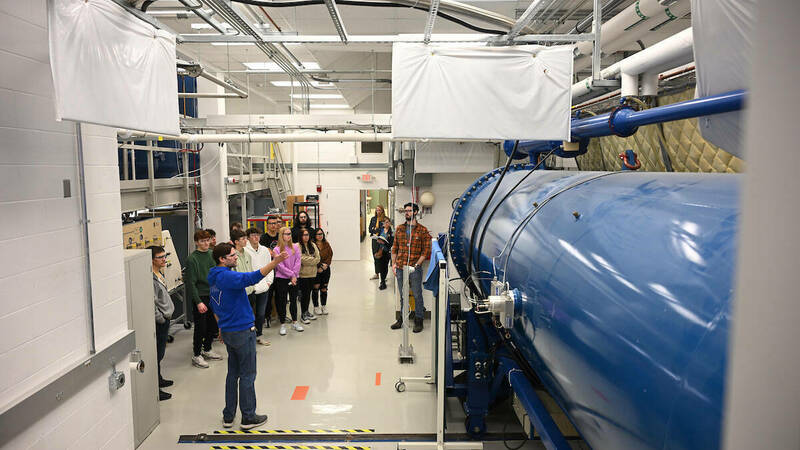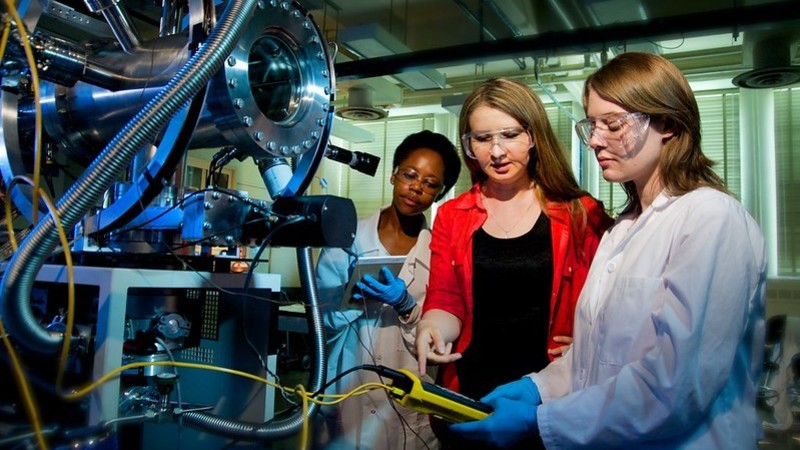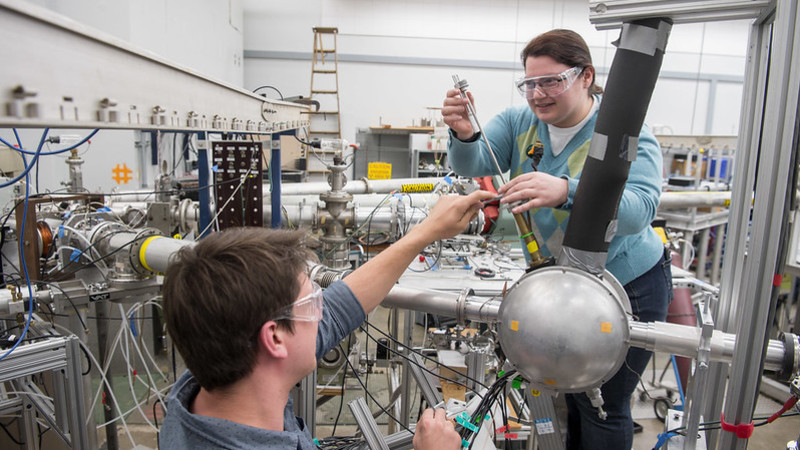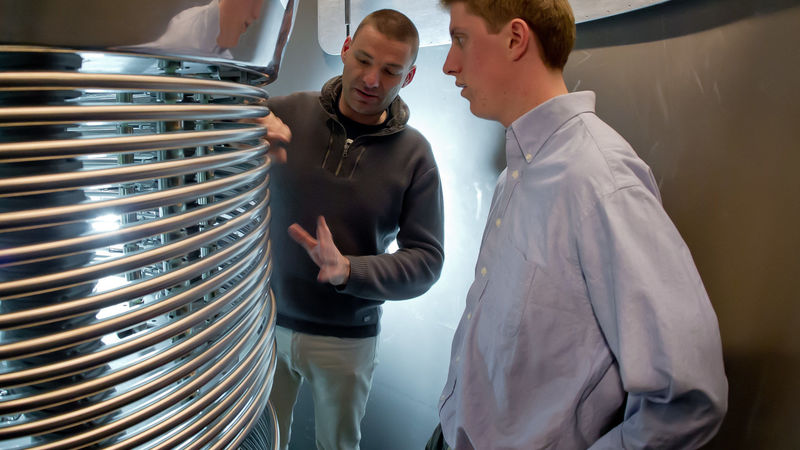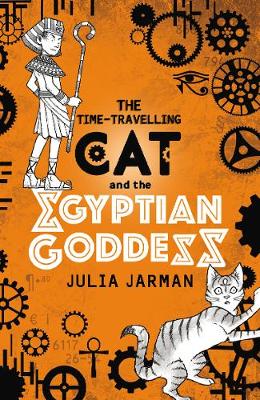|
|
martes, 20 de marzo de 2012
De izquierda a derecha: Galileo Galilei, Marie Curie, J. Robert Oppenheimer, Isaac Newton, Louis Pasteur, Stephen Hawking, Albert Einstein, Carl Sagan, Thomas Edison, Aristoteles, Neil deGrasse Tyson, Richard Dawkins y Charles Darwin.
|
|
|
|
|
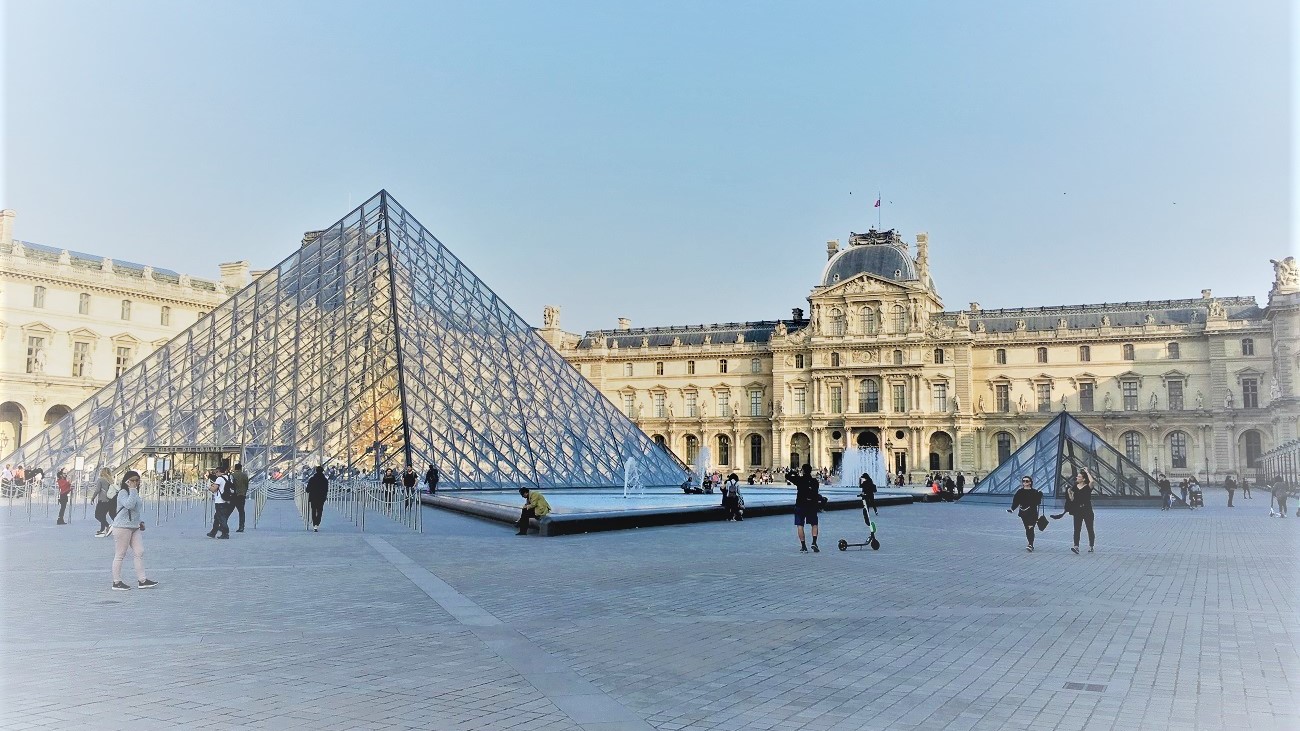
I love the adventure stories with twisted plots, mysteries, puzzles. That is why I love the stories created by Dan Brown and his major character Professor Robert Langdon who was very well played by Tom Hanks in the series of successful movies. Moreover, in my travel adventures I managed to visit most of the countries, places, museums, etc, and even CERN, which are described in the books and movies. And when I watch the movies I travel back in time together with Professor Langdon.
So, today I invite you to solve great mysteries of Leonardo, Illuminati, and Dante. It’s time to refresh your knowledge of history and arts. Welcome aboard!
Jacques Saunière, a Louvre curator, is pursued through the Grand Gallery by an albino Catholic monk named Silas, who demands the location of the Priory’s “keystone” to find and destroy the Holy Grail. Saunière gives him a false lead and is murdered. The police find his body posed like Da Vinci’s Vitruvian Man. Police captain Bezu Fache has his lieutenant, Jérôme Collet, summon American symbologist Robert Langdon, who is in Paris for a lecture on the interpretation of symbols, to examine Saunière’s body.
Langdon is shown the body and a secret message, readable only by blacklight. It contains an out-of-order Fibonacci sequence. Sophie Neveu, a police cryptographer and Saunière’s granddaughter, tells Langdon that Fache planted a tracker on him after finding the words, “P.S. Find Robert Langdon” at the end of Saunière’s secret message. Fache believes that Langdon murdered Saunière. Sophie throws away the tracker, distracting the police while they sneak around the Louvre, finding more clues in Leonardo da Vinci’s works. Langdon deduces that Saunière was the grand master of the Priory of Sion. And our adventure begins.
We meet Professor Robert Langdon for the first time during his lecture. He uses Sony laptop for his presentation.
In one of the next scenes of the movie we can clearly see the van with Bosch logo. Same is for the famous French water – Badoit. We can see it in a bucket full of ice.
When Robert Langdon and Sophie Neveu (Audrey Tautou) come to the bank to retrieve the cryptex, we can see how KUKA robot picks the right box that belonged to Jacques Saunière. When the bank employee helps the main characters to pass the police, we can get a glimpse of his Rolex watch.
At Sir Leigh Teabing’s (Ian McKellen) house our guests learn more about The Last Supper painting secrets. Their host is also a fan of Sony, so we may see various TV sets and displays in the house. While enjoying their evening tea, we can as well see Heinz there, of course.
When Robert Langdon and Sophie look for a tomb in London, they borrow a Sony Ericsson smartphone to search for more information.
In the final scene of the movie we see that Robert lives in Ritz hotel in Paris, and from there he starts his evening walk to follow the Arago medallions and come to the Louvre.
The Catholic Church mourns the sudden death of Pope Pius XVI, and prepares for the papal conclave to elect his successor in Vatican City. Father Patrick McKenna (Ewan McGregor), the camerlengo, takes temporary control of the Vatican during the sede vacante period.
Meanwhile, at CERN, scientists Father Silvano Bentivoglio and Dr. Vittoria Vetra (Ayelet Zurer) create three canisters of antimatter. As Vetra goes to evaluate the experiment, she discovers that Silvano has been murdered, and one of the canisters was stolen. Shortly thereafter, four of the preferiti, the favored candidates to be elected pope, are kidnapped by a man claiming to represent the Illuminati. He sends the Vatican a warning, claiming he will murder each of the cardinals from 8 p.m. to midnight, when the stolen antimatter will explode and destroy the city, hidden somewhere within.
Unlike two other movies, there are only few product placements in Angels & Demons. And they can be divided in two categories – Sony and TV channels.
That is why we see Sony computers and displays in the first scene in CERN.
And when the events of the movie accelerate, we can see various TV channels broadcasting from Vatican City. These are Canal+, CNN, and Reuters.
And this is it for Angels & Demons. More product placements are waiting in Inferno.
Some time after helping the Vatican dealing with an antimatter threat, Harvard University professor Robert Langdon awakens in a hospital room in Florence, Italy, with no memory of what has transpired over the last few days, but being plagued with hellish visions. Dr. Sienna Brooks (Felicity Jones), the doctor tending to him, reveals that he is suffering from amnesia as a result of a bullet wound to the head. An orderly says the police are there to question Langdon but the officer turns out to be Vayentha, an assassin, who shoots the orderly while coming up the hallway. Brooks helps Langdon to escape, and they flee to her apartment.
Among Langdon’s personal belongings, Langdon and Brooks find a Faraday pointer, a miniature image projector with a modified version of Sandro Botticelli’s Map of Hell, which itself is based on Dante’s Inferno. They soon realize this is the first clue in a trail left by Bertrand Zobrist, a dangerously unstable villain who believed that rigorous measures were necessary to reduce the Earth’s growing population, and who committed suicide three days earlier after being chased by armed government agents.
When Robert Langdon wakes up in Sienna’s house, we can find various brands across her apartment. First of all we see Sony TV remote controls. And when Professor asks for coffee, Sienna goes to the kitchen where we spot tea brands like Greenfield and Twinings.
While Sienna is looking for some clothes for Robert, he decides to use her Apple MacBook to check his Google mail.
When Robert and Sienna decide to call to the consulate, we see that Sienna uses Sony smartphone. When they realize that they can trust no one, they start their investigation. First, they search for the information about Zobrist. Google, Wikipedia, and YouTube are very helpful even in the movies.
Later in the movie we see more Sony product placements – a TV set in Command Risk Consortium, a smartphone and a tablet used by Elizabeth Sinskey.
When Robert Langdon and Sienna Brooks try to escape from their enemies with the help of Christoph Bouchard, they make everyone believe they are going to fly to Switzerland via Swiss, but instead they take an Italo speed train to Venice.
When finally the truth is revealed and memory is restored, Robert and Elizabeth go to Istanbul to stop Sienna from unleashing the virus. Elizabeth shares Zobrist’s message with Robert. They watch it together on a Dell laptop.
In the final scene when Professor returns Dante’s mask to the museum, we can see the museum employee wearing the tag with the Florentine Civic Museums branding.
Unfortunately, there is no news about the future movies with Tom Hanks. And no news about any new books. Looking forward to new adventures of Professor Langdon.
I highly recommend you to visit Product Placement section of the website. You will find more amazing movie series analysed there.
https://www.marketing-psycho.com/robert-langdon-product-placement/ |
|
|
|
|
- "[T]his makes it rather clear that Janet Jackson, via exposing her right breast and her juxtaposition with Beyonce
 (representing the American spirit), was 'designed' to embody Lady Justice/Liberty - signifying or prompting the rebirth of the spirit of 'Columbia'. The prevalent 'blackness' additionally alludes to the pertinence of another related figure Mary Magdalene, recently made popular by the huge success of the book The Da Vinci Code, as this biblical/esoteric 'wife' of Jesus - embodying the feminine and sexuality - was sometimes portrayed as the 'Black Madonna'." (representing the American spirit), was 'designed' to embody Lady Justice/Liberty - signifying or prompting the rebirth of the spirit of 'Columbia'. The prevalent 'blackness' additionally alludes to the pertinence of another related figure Mary Magdalene, recently made popular by the huge success of the book The Da Vinci Code, as this biblical/esoteric 'wife' of Jesus - embodying the feminine and sexuality - was sometimes portrayed as the 'Black Madonna'."
https://www.goroadachi.com/etemenanki/lucifer-timecode-2.htm |
|
|
|
|
LAST UPDATED: 27 NOVEMBER 2024
You may know Paris for its cathedral Notre-Dame, the Eiffel Tower, its café culture and its amazing museums and art galleries. The French capital is also famous for its fantastic perspective that runs from the Louvre to La Défense. This is the ‘Voie Triomphale’, aka the Historical Axis of Paris.
This line is one of the most prestigious perspectives in the world. In fact, its design has inspired cities such as Buenos Aires, Washington DC, New Delhi and Canberra. In this article, we’ll learn more about the Historical Axis of Paris. We’ll discover the stunning monuments and I reveal to you some stunning facts.
What is the Historical Axis of Paris?
 The glass pyramid and the historical axis of Paris © French Moments The glass pyramid and the historical axis of Paris © French Moments
The Historical Axis, also known in French as “Axe Historique”, “Voie Triomphale” or “Voie Royale” is orientated on a 26° angle.
It follows the course of the Sun from its rising in the East to its setting in the West.
Oddly, this angle of orientation is the same as that of Paris’ Notre-Dame Cathedral, some 1,000 metres away from the Louvre Palace.
More than just a series of monuments placed along the axis, it seems that a complex symbolism was at work in the mind of the successive urban planners.
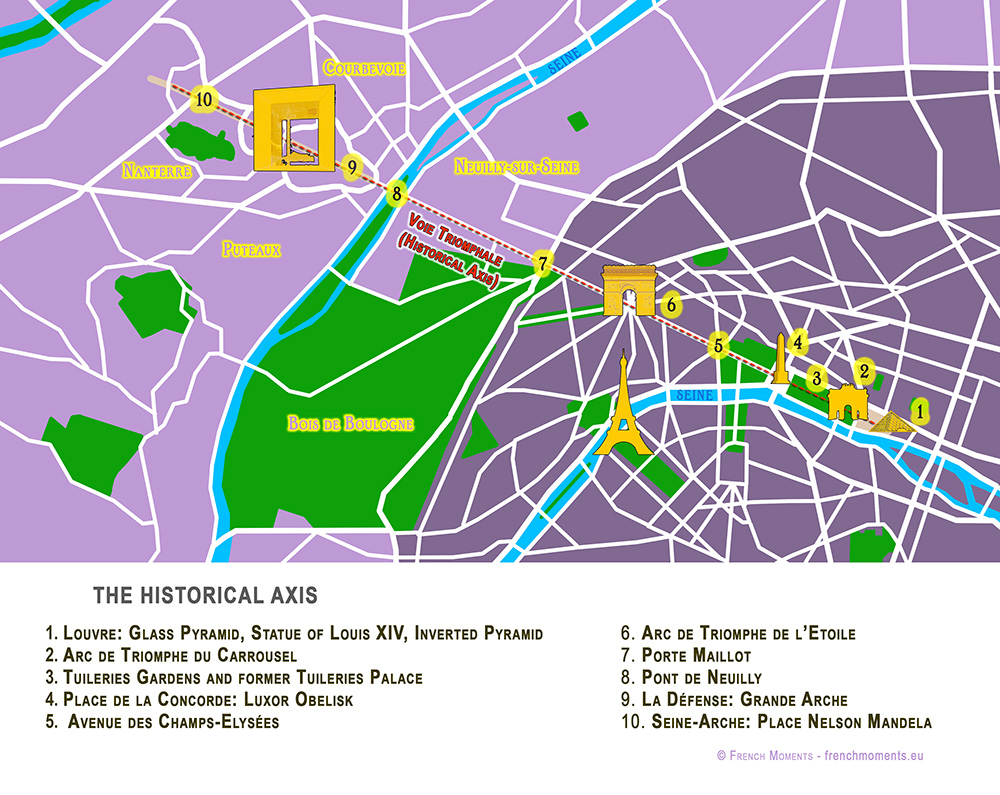
The Historical Axis runs through some of Paris’ most celebrated monuments and squares:
Let’s move along the Historical Axis of Paris, from East to West, starting from the Louvre.
The Palace of the Louvre
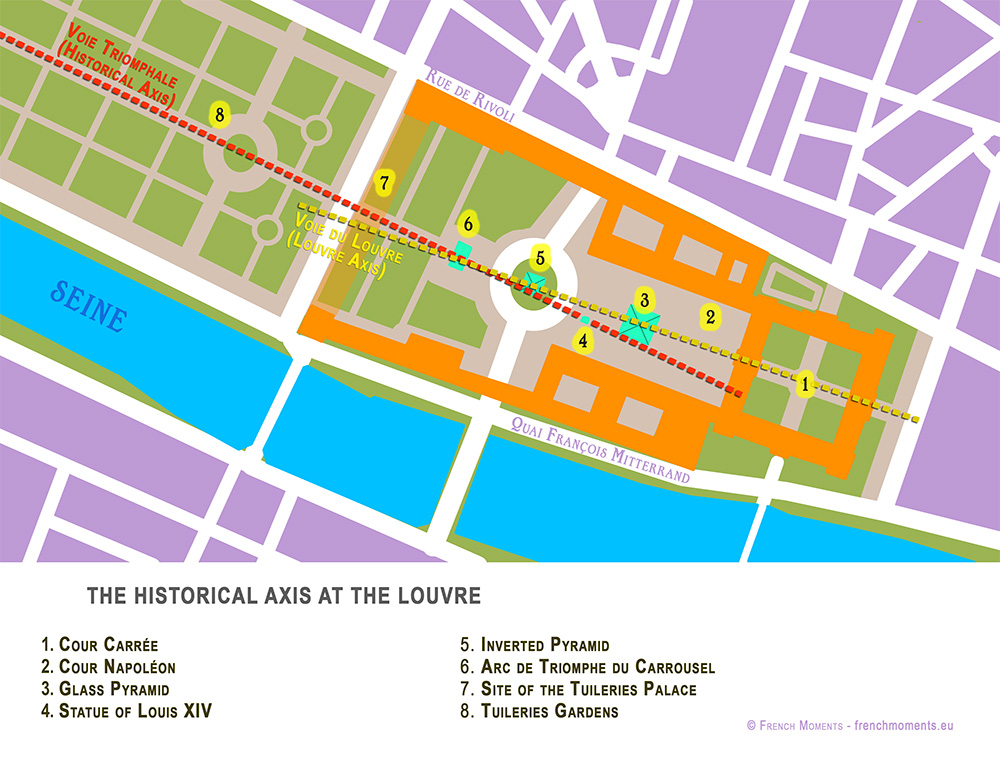
Today the great perspective starts at the Louvre, immediately beyond the Church of St Germain l’Auxerrois.
The crab-shaped Palace was the main residence of the kings of France until 1682, when Louis XIV, the ‘Sun King’, moved his court to Versailles. It currently houses one of the world’s most wonderful museums in a complex that is known as the “Grand Louvre”.
 The Louvre today © French Moments The Louvre today © French Moments
The controversial glass pyramid of the Louvre
President François Mitterrand left his mark with his pharaonic project of “Le Grand Louvre”. He wished to complete it for the bicentennial celebration of the French Revolution in 1989. The titanic project comprised of major renovation works and the construction of a new landmark along the Historical Axis: the celebrated (and controversial) Glass Pyramid.
But if you look closer, you’ll notice that the glass pyramid is not aligned with the other monuments on the Historical Axis.
That’s why something had to be added in this vast courtyard of the Louvre…
https://frenchmoments.eu/historical-axis-of-paris-la-voie-triomphale/ |
|
|
|
|
-
FEB3
Mon, Feb 3 at 3:30 pm - 4:30 pm
184 Nieuwland Science Hall
-
FEB5
Wed, Feb 5 at 12:30 pm - 1:30 pm
127 Nieuwland Science Hall
-
FEB6
Thu, Feb 6 at 4:00 pm - 5:00 pm
123 Nieuwland Science Hall
-
FEB10
Mon, Feb 10 at 3:30 pm - 4:30 pm
184 Nieuwland Science Hall
-
FEB11
Tue, Feb 11 at 12:30 pm - 1:30 pm
127 Nieuwland Science Hall
-
FEB11
Tue, Feb 11 at 3:30 pm - 4:30 pm
123 Nieuwland Science Hall

FACULTY SPOTLIGHT
Peter Garnavich
Peter Garnavich, professor in the Department of Physics and Astronomy at the University of Notre Dame, has been elected as a Fellow of the American Astronomical Society (AAS).
He was elected for “innovative work on supernovae, gamma-ray bursts, and cataclysmic variables that has proven essential to furthering our understanding of various astrophysical phenomena,” the American Astronomical Society described in a press release.
Full story here.
|
|
|
|
|
  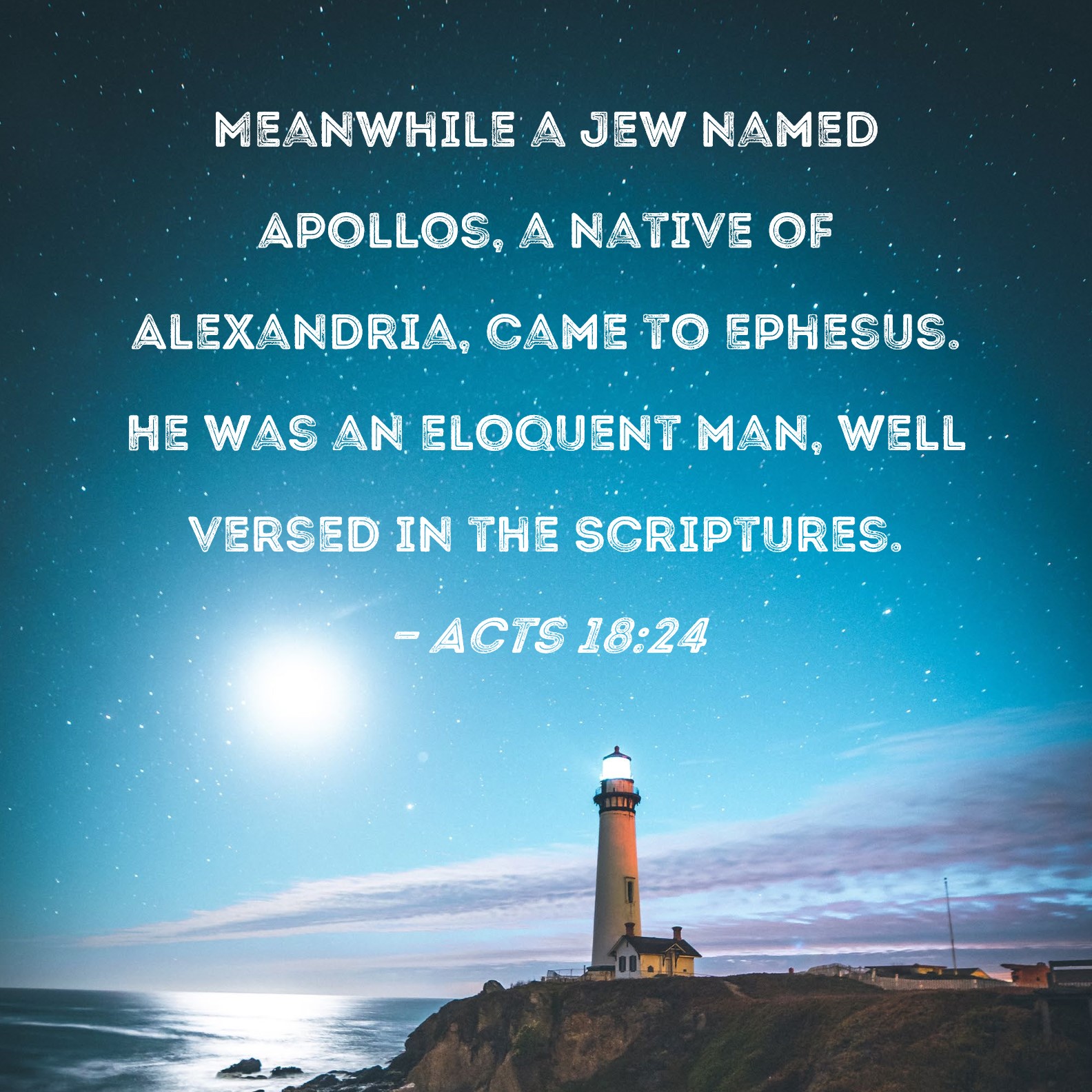 
New International VersionMeanwhile a Jew named Apollos, a native of Alexandria, came to Ephesus. He was a learned man, with a thorough knowledge of the Scriptures.
New Living TranslationMeanwhile, a Jew named Apollos, an eloquent speaker who knew the Scriptures well, had arrived in Ephesus from Alexandria in Egypt.
English Standard VersionNow a Jew named Apollos, a native of Alexandria, came to Ephesus. He was an eloquent man, competent in the Scriptures.
Berean Standard BibleMeanwhile a Jew named Apollos, a native of Alexandria, came to Ephesus. He was an eloquent man, well versed in the Scriptures.
Berean Literal BibleNow a certain Jew named Apollos, a native of Alexandria, came to Ephesus, being an eloquent man, mighty in the Scriptures.
King James BibleAnd a certain Jew named Apollos, born at Alexandria, an eloquent man, and mighty in the scriptures, came to Ephesus.
New King James VersionNow a certain Jew named Apollos, born at Alexandria, an eloquent man and mighty in the Scriptures, came to Ephesus.
New American Standard BibleNow a Jew named Apollos, an Alexandrian by birth, an eloquent man, came to Ephesus; and he was proficient in the Scriptures.
NASB 1995Now a Jew named Apollos, an Alexandrian by birth, an eloquent man, came to Ephesus; and he was mighty in the Scriptures.
NASB 1977Now a certain Jew named Apollos, an Alexandrian by birth, an eloquent man, came to Ephesus; and he was mighty in the Scriptures.
Legacy Standard BibleNow a Jew named Apollos, an Alexandrian by birth, an eloquent man, arrived at Ephesus; and he was mighty in the Scriptures.
Amplified BibleNow a Jew named Apollos, a native of Alexandria, came to Ephesus. He was an eloquent and cultured man, and well versed in the [Hebrew] Scriptures.
Christian Standard BibleNow a Jew named Apollos, a native Alexandrian, an eloquent man who was competent in the use of the Scriptures, arrived in Ephesus.
Holman Christian Standard BibleA Jew named Apollos, a native Alexandrian, an eloquent man who was powerful in the use of the Scriptures, arrived in Ephesus.
American Standard VersionNow a certain Jew named Apollos, an Alexandrian by race, an eloquent man, came to Ephesus; and he was mighty in the scriptures.
Contemporary English VersionA Jewish man named Apollos came to Ephesus. Apollos had been born in the city of Alexandria. He was a very good speaker and knew a lot about the Scriptures.
English Revised VersionNow a certain Jew named Apollos, an Alexandrian by race, a learned man, came to Ephesus; and he was mighty in the scriptures.
GOD'S WORD® TranslationA Jew named Apollos, who had been born in Alexandria, arrived in the city of Ephesus. He was an eloquent speaker and knew how to use the Scriptures in a powerful way.
Good News TranslationAt that time a Jew named Apollos, who had been born in Alexandria, came to Ephesus. He was an eloquent speaker and had a thorough knowledge of the Scriptures.
International Standard VersionMeanwhile, a Jew named Apollos arrived in Ephesus. He was a native of Alexandria, an eloquent man, and well versed in the Scriptures.
Majority Standard BibleMeanwhile a Jew named Apollos, a native of Alexandria, came to Ephesus. He was an eloquent man, well versed in the Scriptures.
NET BibleNow a Jew named Apollos, a native of Alexandria, arrived in Ephesus. He was an eloquent speaker, well-versed in the scriptures.
New Heart English BibleNow a certain Jew named Apollos, an Alexandrian by race, an eloquent man, came to Ephesus. He was mighty in the Scriptures.
Webster's Bible TranslationAnd a certain Jew named Apollos, born at Alexandria, an eloquent man, and mighty in the scriptures, came to Ephesus.
Weymouth New TestamentMeanwhile a Jew named Apollos came to Ephesus. He was a native of Alexandria, a man of great learning and well versed in the Scriptures.
World English BibleNow a certain Jew named Apollos, an Alexandrian by race, an eloquent man, came to Ephesus. He was mighty in the Scriptures.
Literal Translations
Literal Standard VersionAnd a certain Jew, Apollos by name, an Alexandrian by birth, a man of eloquence, being mighty in the Writings, came to Ephesus;
Berean Literal BibleNow a certain Jew named Apollos, a native of Alexandria, came to Ephesus, being an eloquent man, mighty in the Scriptures.
Young's Literal TranslationAnd a certain Jew, Apollos by name, an Alexandrian by birth, a man of eloquence, being mighty in the Writings, came to Ephesus,
Smith's Literal TranslationAnd a certain Jew, Apollos by name, an Alexandrian by birth, an eloquent man, arrived at Ephesus, being able in the writings.
Catholic Translations
Douay-Rheims BibleNow a certain Jew, named Apollo, born at Alexandria, an eloquent man, came to Ephesus, one mighty in the scriptures.
Catholic Public Domain VersionNow a certain Jew named Apollo, born at Alexandria, an eloquent man who was powerful with the Scriptures, arrived at Ephesus.
New American BibleA Jew named Apollos, a native of Alexandria, an eloquent speaker, arrived in Ephesus. He was an authority on the scriptures.
New Revised Standard VersionNow there came to Ephesus a Jew named Apollos, a native of Alexandria. He was an eloquent man, well-versed in the scriptures.
Translations from Aramaic
Lamsa BibleAnd a certain Jew named A-pol’los, a native of Al-ex-an’dri-a, an eloquent man and well versed in the scriptures, came to Eph'esus.
Aramaic Bible in Plain EnglishOne man, a Jew whose name was Apollo, a native of Alexandria and instructed in the word, was familiar with the Scriptures and he came to Ephesaus.
NT Translations
Anderson New TestamentAnd a certain Jew, named Apollos, an Alexandrian by birth, an eloquent man, and mighty in the Scriptures, came to Ephesus.
Godbey New TestamentAnd a certain Jew, Apollos by name, an Alexandrian by race, an eloquent man, came into Ephesus, being mighty in the scriptures.
Haweis New TestamentNow a certain Jew named Apollos, an Alexandrian by birth, a man of eloquence, who was powerful in the Scriptures, had come to Ephesus.
Mace New TestamentIn the mean time a Jew, nam'd Apollos, born at Alexandria, a man of letters, and vers'd in the scriptures, arriv'd at Ephesus.
Weymouth New TestamentMeanwhile a Jew named Apollos came to Ephesus. He was a native of Alexandria, a man of great learning and well versed in the Scriptures.
Worrell New TestamentNow a certain Jew, Apollos by name, an Alexandrian by birth, a learned man, came down to Ephesus; and he was mighty in the Scriptures.
Worsley New TestamentNow there came to Ephesus a certain Jew named Apollos, an Alexandrian by birth, an eloquent man, and mighty in the scriptures.
|
|
|
|
|
|
FENÓMENO ASTRONÓMICO
¿Por qué todos los 18 de julio el Sol sale exactamente detrás del Obelisco en la Avda. 18 de Julio?
El astrónomo Gonzalo Tancredi explicó a Telenoche los detalles de este curioso fenómeno. Además, invita a participar del “rito” del amanecer este jueves a las 07:48 en 18 de Julio y Acevedo Díaz.
El Sol sobre el Obelisco de 18 de Julio.
Crédito: Rodolfo Caporale
17 de julio de 2024 - 09:17
El sol va cambiando de punto de salida y de puesta a lo largo del año y hay dos fechas por año en el cual el amanecer se da en una dirección específica. Todos los 18 de julio la estrella aparece a los 65° de Azimut (ángulo de medida) desde el Norte hacia el Este, coincidiendo exactamente con la dirección de la avenida capitalina de 18 de Julio.
LEE ADEMÁS
Desde el monumento del Gaucho hacia el Obelisco, este jueves se verá emerger la bola naranja justo por detrás del emblemático monumento a los Constituyentes de 1830, otra insignia que concuerda con la famosa fecha.
En el marco de este suceso, el astrónomo Gonzalo Tancredi invitó a través de su cuenta de X a presenciar el fenómeno: “Como surgió el año pasado, el Sol sale todos los 18 de julio en la dirección de la Avda. 18 de Julio hacia el Obelisco. El 18/7 cumpliremos el “rito” de ver el amanecer (07:48) en 18 y Acevedo Díaz para la salida del Sol detrás del Obelisco. Al que quiera acompañar es bienvenido”, posteó.
¿Una casual conjunción de nombres y fenómenos?
Sobre si esa disposición es azarosa o fue algo planificado, "todavía no tenemos una respuesta”, expresó el astrónomo. “Podría deberse a una coincidencia, pero lo que nos llama la atención es que es una dirección bastante exacta, con un error de menos de un grado en la dirección de 18 de Julio con la salida del sol para esa fecha”, aclaró.
Sobre si puede tener connotaciones culturales o místicas, “también eso es parte de la investigación que quisiéramos profundizar, no es la única construcción hecha por el hombre que tiene este tipo de orientaciones”, sostuvo el docente.
Lo que se sabe
Tancredi es profesor del Departamento de Astronomía de la Facultad de Ciencias y el año pasado se topó con el hallazgo de un internauta que le llamó mucho la atención: “Quien hizo la propuesta inicial, o por lo menos el hallazgo, fue Gustavo Degeronimi que publicó un tweet y a partir de eso, es que iniciamos un poco de una investigación”.
El primer paso fue conocer sobre la dirección en la que fue erigida Montevideo. También incorporaron una investigación histórica aproximada para unir algunos elementos relevantes. Según indicó el astrónomo, aunque por el momento los hallazgos son insuficientes, están intentando iniciar una colaboración con el Departamento de Historia de la Facultad de Humanidades para poder profundizar ese relevamiento.
“No sabemos exactamente el momento y quién fue el diseñador, el topógrafo que hizo esa demarcación, si bien hay indicios de que podría haber sido en la época de un arquitecto y topógrafo que estuvo en Montevideo, un italiano que se llama Carlos Zucchi, no tenemos certeza de que ha sido algo intencional”, describió Tancredi.
“Hay muchas edificaciones, como las pirámides de Egipto, o varias de los Mayas y de otras culturas, que también han utilizado las alineaciones con la salida y puesta del sol. Stonehenge, es otro caso muy conocido. Así que podría tener, sin duda, una condición cultural y también podríamos pensar en alguna connotación más mística”, indicó.
https://www.telenoche.com.uy/ciencia-y-tecnologia/por-que-todos-los-18-julio-el-sol-sale-exactamente-detras-del-obelisco-la-avda-18-julio-n5370552 |
|
|
|
|
Número 24:9 Se encorvará para echarse como león, Y como LEONA; ¿quién lo despertará? Benditos los que te bendijeren, Y malditos los que te maldijeren.
2. Job 4:11 El león viejo perece por falta de presa,Y los hijos de la LEONA se dispersan.
3. Isaías 30:6 Profecía sobre las bestias del Neguev: Por tierra de tribulación y de angustia, de donde salen la LEONA y el león, la víbora y la serpiente que vuela, llevan sobre lomos de asnos sus riquezas, y sus tesoros sobre jorobas de camellos, a un pueblo que no les será de provecho.
4. Ezequiel 19:2 Dirás: ¡Cómo se echó entre los leones tu madre la LEONA! Entre los leoncillos crió sus cachorros,
5. Nahum 2:11 ¿Qué es de la guarida de los leones, y de la majada de los cachorros de los leones, donde se recogía el león y la LEONA, y los cachorros del león, y no había quien los espantase?
6. Nahum 2:12 El león arrebataba en abundancia para sus cachorros, y ahogaba para sus LEONAs, y llenaba de presa sus cavernas, y de robo sus guaridas.
| Reply |
Message 42 of 47 on the subject |
|
|
|
|
| Reply |
Message 43 of 47 on the subject |
|
|
|
|
| Reply |
Message 44 of 47 on the subject |
|
|
|
|
| Reply |
Message 45 of 47 on the subject |
|
|
|
|
| Reply |
Message 46 of 47 on the subject |
|
|
|
|
|
|
|
|
|
Start-up of 22nd Run at the Relativistic Heavy Ion Collider (RHIC)
Physicists will try out innovative accelerator techniques and deliver high-energy polarized protons for explorations of protons' inner structure using new detector components at STAR
December 13, 2021
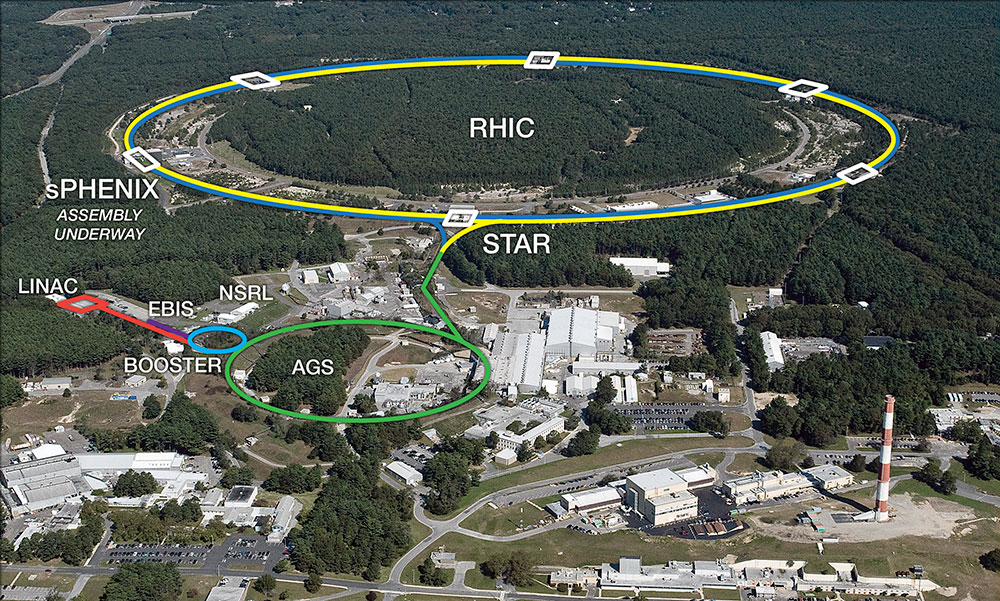 enlarge enlarge
Run 22 at the Relativistic Heavy Ion Collider (RHIC) will feature collisions of polarized protons, new data collected by upgraded components of the STAR detector, and tests of innovative accelerator techniques.
UPTON, NY—Particle smashups have begun for Run 22 at the Relativistic Heavy Ion Collider (RHIC). RHIC, a 2.4-mile-circumference particle collider at the U.S. Department of Energy’s Brookhaven National Laboratory, operates as a DOE Office of Science user facility, serving up data from particle collisions to nuclear physicists all around the world. On the menu this run: collisions between beams of polarized protons interspersed with tests of innovative accelerator techniques. During the run, RHIC’s recently upgraded STAR detector will track particles emerging from collisions at a wider range of angles than ever before.
The new data will add to earlier RHIC datasets exploring the fundamental building blocks of visible matter. In addition, the physics findings, accelerator tests, and detector technologies will play important roles in the Electron-Ion Collider (EIC)—DOE’s next planned nuclear physics facility, which will reuse key components of RHIC.
Discovering the universal properties of protons and how they emerge from the interactions of quarks and gluons, the building blocks within protons, is a central goal of both facilities. RHIC’s proton-proton collisions could reveal unprecedented details and a preview of how certain characteristics depend on the dynamic motions of the quarks and gluons.
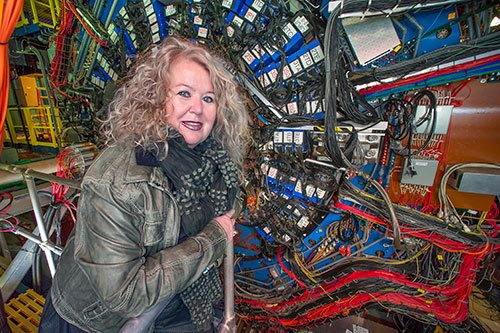 enlarge enlarge
Brookhaven Lab physicist Elke Aschenauer, who led the STAR upgrade project, notes how the new detector components will enable measurements at RHIC that advance our understanding of nucleon structure and help to lay the foundations for future measurements at the Electron-Ion Collider.
“Our goal this run is basically doing EIC physics with proton-proton collisions,” said Brookhaven Lab physicist Elke-Caroline Aschenauer, a member of the STAR collaboration who is also involved in planning the experiments and scientific program at the EIC. “It’s important to do both [measurements at RHIC and the EIC] because you have to verify that what you measure in electron-proton collisions at the EIC and in proton-proton events at RHIC is universal—meaning it doesn’t depend on which probe you use to measure it,” she explained.
The measurements rely on RHIC’s ability to align the “spins” of protons in an upward pointing direction. This alignment, or polarization—a capability unique among colliders like RHIC—gives scientists a directional frame of reference for tracking how particles generated in the collisions move.
“We are using polarization as a vehicle to study proton structure, and particularly the 3D structure, including how the internal particles (quarks and gluons) are moving inside the proton,” Aschenauer said.
Delivering proton beams
The physicists in Brookhaven Lab’s Collider-Accelerator Department (C-AD), who steer the beams around RHIC, are determined to give STAR what it needs.
“For Run 22 we are going to focus on being as efficient as possible and racking up the collisions at the highest possible polarization,” said C-AD physicist Vincent Schoefer, this year’s run coordinator.
When we spoke with Schoefer, he was busy “waking up” equipment that hasn't been used since Run 17—the last time polarized protons were collided at RHIC. This equipment includes “helical dipole” magnets that help preserve the polarization of the protons as they make millions of turns around RHIC’s twin accelerator rings. This year’s run will take place at the highest collision energy: 500 billion electron volts (GeV) per colliding proton pair.
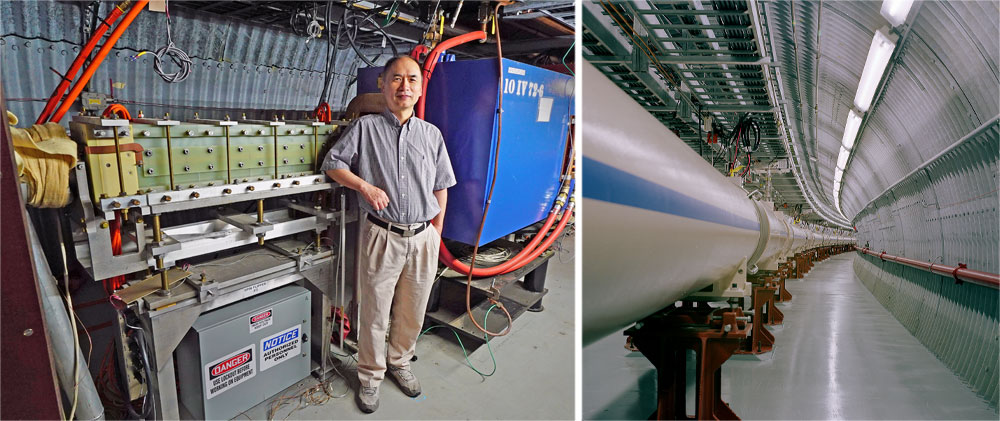 enlarge enlarge
C-AD physicist Haixin Huang with some of the accelerator components that keep RHIC's proton beams aligned as they make their way around the 2.4-mile-circumference tunnel (right).
The C-AD team was also preparing “polarimeters” to measure just how aligned those proton spins are.
“It doesn't matter how highly polarized your beam is if you can't measure that. So, the polarimetry is really crucial,” Schoefer said.
Accelerator physicists in C-AD and experimental physicists involved in making measurements that rely on polarized beams collaborated on the design of RHICs polarimeters.
“This work is an example of the type of collaboration between groups that has been going on since the start of RHIC,” said C-AD physicist Haixin Huang.
Pumping up polarization
Keeping proton beams tightly packed helps preserve polarization. It also maximizes the likelihood that you get collisions when the beams cross. But keeping protons close together is a challenge.
“They're all positively charged particles, so they want to repel one another,” Schoefer explained. “The more tightly you pack them, the more they resist that packing.”
The repulsion is particularly strong in the early stages of acceleration—before protons have been ramped up to full collision energy. So, this run, the C-AD team will try a technique that’s worked when RHIC accelerates larger particles but has never been used with protons before.
“We are going to split each proton bunch into two when they’re still at low energy in the Booster, and accelerate those as two separate bunches,” Schoefer said. “That splitting will alleviate some of the stress during low energy, and then we can merge the bunches back together to put very dense bunches into RHIC.”
This merging maneuver is challenging, Schoefer said, because it takes “a really long time—where a really long time is one second! For the protons, that’s 300,000 turns around the Alternating Gradient Synchrotron (AGS).” (The AGS is the link in the accelerator chain after the Booster that feeds particle beams into RHIC.) “During those 300,000 turns, we have to handle the protons very gently, so we don’t ruin the nice beams we have prepared.”
The CA-D team will also calculate very careful trajectories for the particles’ paths through the collider. This step should help counteract the tendency of the accelerator’s magnetic fields (which physicists use to steer and focus the beams) to rotate the spins of protons away from ideal alignment.
“We're going to try different trajectories and see if we can learn something about what is making this misalignment happen,” Schoefer said.
The combination of techniques is now delivering highly polarized proton beams to collide inside STAR.
STAR upgrades
When they analyze results from these collisions, STAR physicists will be looking for differences in the numbers of certain particles emerging to the left and right of the polarized protons’ upward pointing direction.
For example, they want to test whether there’s a repulsive interaction between particles with like “color” charges that’s opposite to the attractive interaction observed between unlike color-charged particles. (Color charge is the type of charge through which quarks interact.) The opposite force should produce the opposite directional preference for certain particle decay products.
STAR first saw hints of this effect in data collected in 2011, published in 2016. A preliminary analysis of additional data collected in Run 17 indicates a small effect but with large uncertainties. Run 22 will help STAR reduce those uncertainties with larger data sets.
In addition, the recently installed STAR upgrades will give physicists the ability to track particles at previously inaccessible angles toward the front and rear of the detector.
“This is the region where we expect the left-right directional preference to be larger,” Aschenauer said.
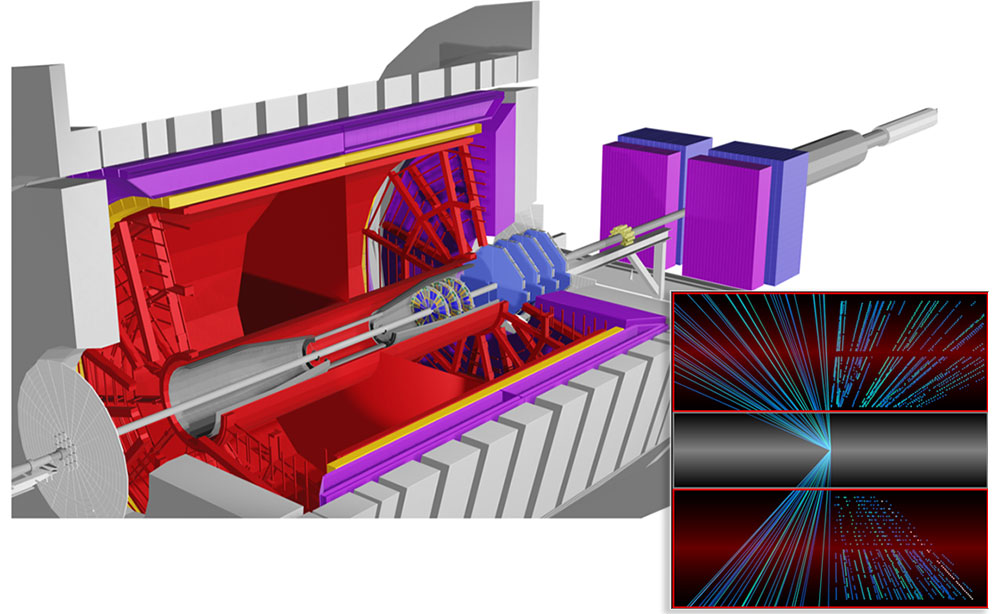 enlarge enlarge
A side view of the STAR detector with an inset showing particle tracks (left) and particle detector "hits" (right) from a collision. The top part of the inset shows the coverage with the new iTPC sectors compared to the old sectors (bottom). Notice how the new sectors record more hits per track, especially close to the beamline, as well as tracks at more forward and rearward angles (more to the left and right in the inset view).
The upgrades include an inner Time Projection Chamber (iTPC), installed in 2019, which placed many more sensors in the inner sectors of the cylindrical STAR detector, close to the colliding particles. Then, earlier this year, the STAR team installed “forward” particle-tracking components outside one end of the detector.
To picture how these upgrades increase STAR’s particle tracking range, think of STAR as a barrel lying on its side with colliding particles entering at each end. Ever since RHIC’s first collisions in 2000, STAR has tracked particles emerging perpendicular to the colliding particles’ path all around the barrel. The classic end-on views of STAR particle tracks showcase this 360-degree detection capability. But looking from the side, the original STAR detector could only track particles emerging at angles up to 45 degrees off vertical in either the forward or rearward direction.
The upgrades “open wider the cone where the particles can go and be detected,” said Zhenyu Ye, a STAR collaborator from the University of Illinois, Chicago. Ye led the design and construction of the new silicon-based particle-tracking components installed at the forward end of STAR, working with scientists from National Cheng Kung University in Tainan and Shandong University in Qingdao.
These components give scientists the ability to detect particles emerging almost in line with the colliding beams, including jets of particles that reveal information about the colliding quarks’ energy, direction, and spin.
“This information is essential for mapping the 3D arrangement of the proton’s inner building blocks,” said Chi Yang from Shandong University. Yang worked with colleagues from the University of Science and Technology of China and Brookhaven Lab to build additional subdetector systems for the forward tracking detector.
“These upgrades cover exactly the angles where jets would go in the EIC,” said Brookhaven Lab physicist Prashanth Shanmuganathan. So, in addition to increasing the data set for exploring the color charge interactions, “Run 22 will help us learn about the detector technology and the behavior of nucleon structure so we can apply that knowledge to the EIC.”
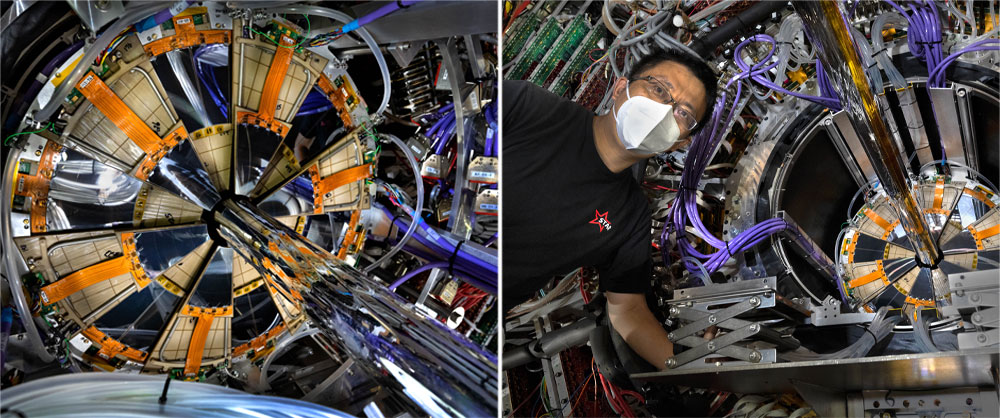 enlarge enlarge
Left: One plane of three silicon tracker detector modules installed around the beampipe at one end of the STAR detector. The shiny mirrorlike wedges, arrayed in alternating "inner" and "outer" positions, form a ring around the beampipe, with each sector connected to readout electronics. Right: Zhenyu Ye inspects the silicon tracker after insertion into the STAR Time Projection Chamber (TPC), where it will operate closer to the point where particles collide. Violet tubes encase signal readout cables while clear tubes carry a cooling fluid to the detector.
Cooling protons
Interspersed with delivering proton-proton collisions for STAR’s Run 22 measurements, the C-AD team will also spend the equivalent of two weeks’ time testing a technique for keeping high-energy protons tightly packed.
You’ll recall that keeping particles packed is important for maximizing collision rates and maintaining polarization. But particle spreading, or heating up, is a problem for all accelerated ion beams—from protons to uranium nuclei (the heaviest ions that have been collided at RHIC).
“There’s no natural shrinking of these ion beams; they never get denser by accident,” Schoefer said.
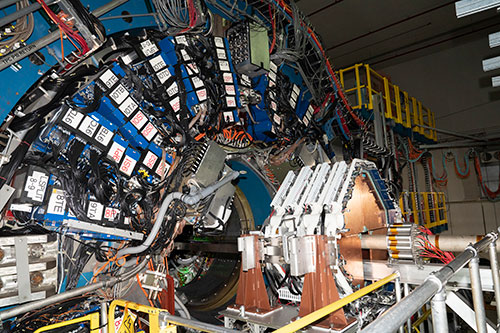 enlarge enlarge
This view of STAR shows the endcap calorimeter electronics (blue with black cables) and four new planes of small-strip Thin Gap Chambers (copper colored with white at edges).
So RHIC accelerator physicists have developed a variety of successful techniques to keep ion beams “cool.” Some of these cooling methods involve delivering “kicks” to push particles closer together, while others literally use cool beams of other particles (electrons) to extract heat from circulating ions.
Realizing that different cooling techniques work best for different types of particles at different energies, physicists are exploring several strategies for possible use at the EIC. In Run 22 they’ll test something called “coherent electron cooling” (CeC) on high energy polarized protons.
Instead of just being cool in temperature, as described above, the negatively charged electrons in CeC play a more active role: They clump around each positively charged proton to create a “mold” of the proton beam.
“It's a little bit like getting braces when the orthodontist takes a mold of your teeth,” Schoefer said. “We take a mold of the proton beam and then we adjust the electron beam slightly to attract the protons closer to a central position. As the electrons move, their electrical attraction drags the protons with them.”
In 36-hour stints, the C-AD physicists will test and try to fine-tune the technique.
Measuring ion polarization
In addition, every two weeks during Run 22, the C-AD team will stop proton acceleration for 12- to 16-hour stretches of accelerator R&D experiments. For one of these projects, they’ll ramp up beams of Helium-3 ions to work on methods for measuring the polarization of particles other than protons.
“In RHIC, the only polarized species we’ve ever had is polarized protons. But EIC will do experiments with polarized ions such as Helium-3. That’s an entirely different beast,” Schoefer said.
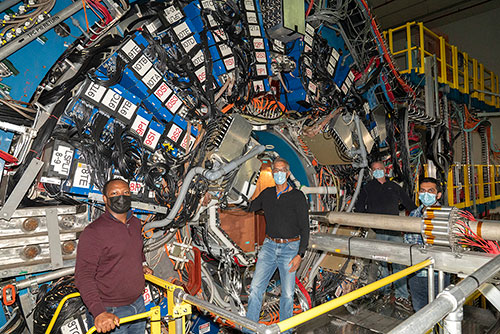 enlarge enlarge
Felix Archampong, Robert Soja, William Struble, and Rahul Sharma of the STAR technical support group completed the mechanical design, construction, and installation of the small-strip Thin Gap Chambers—shown here in position for collecting data—with support from the STAR electronic support group.
The C-AD team worked in collaboration with members of the “Cold-QCD” group in the Physics Department to design ways to measure the polarization of these more complicated ions.
To measure polarization, physicists spray a gas through the beam to act as a target, and measure how the particles in the beam scatter.
“For a proton, that’s already a challenge, but at least the proton stays a proton. When Helium-3 scatters off a target, it may break up into two protons and a neutron, or a proton and a deuteron. To accurately measure the polarization, we have to identify when breakup occurs,” said William Schmidke, a scientist in the physics department who’s been developing polarimetry detectors to make the measurements.
During Run 22, physicists will test the components’ ability to accurately characterize scattering products using unpolarized beams of Helium-3.
“We can do these tests, without measuring polarization, to develop the methods so we’ll be able to measure polarization when we eventually have polarized beams at the EIC,” said Brookhaven physicist Oleg Eyser, another member of the Cold-QCD team.
“Many people made important contributions to the detector and accelerator components needed for Run 22 at RHIC. We are looking forward to the exciting opportunities for physics discoveries and for advancing the technologies and physics analysis methods we will need for the EIC,” said Haiyan Gao, Brookhaven’s Associate Laboratory Director for Nuclear and Particle Physics.
Brookhaven National Laboratory is supported by the Office of Science of the U.S. Department of Energy. The Office of Science is the single largest supporter of basic research in the physical sciences in the United States and is working to address some of the most pressing challenges of our time. For more information, visit science.energy.gov.
https://www.bnl.gov/newsroom/news.php?a=119262 |
|
|
 Primer Primer
 Anterior
624 a 638 de 638
Següent Anterior
624 a 638 de 638
Següent
 Darrer
Darrer

|



:max_bytes(150000):strip_icc():focal(299x0:301x2)/pepsi-perfect-600x450-1-0dcee4c1f37140c5875ca7654e80ae10.jpg)


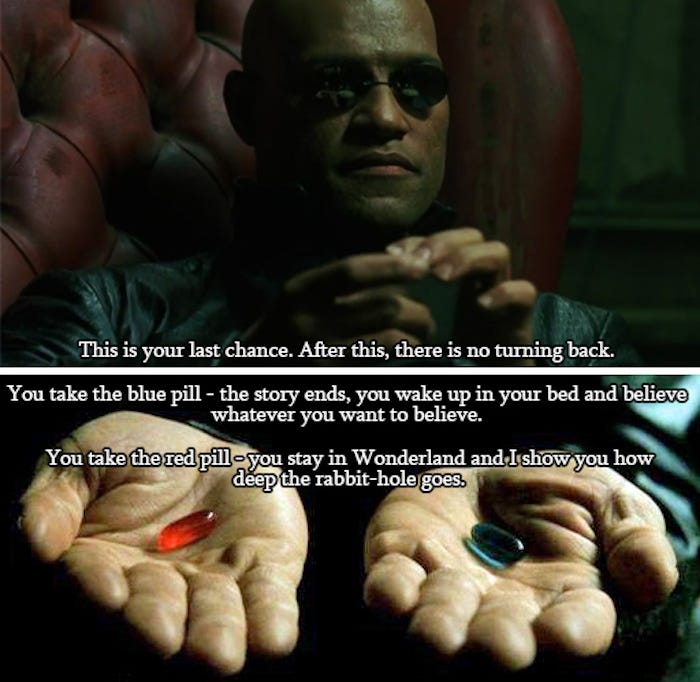



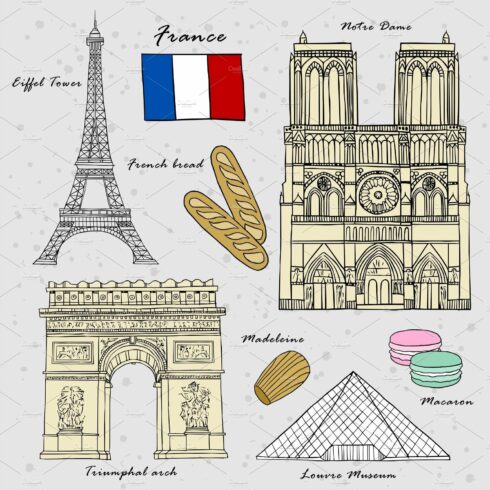
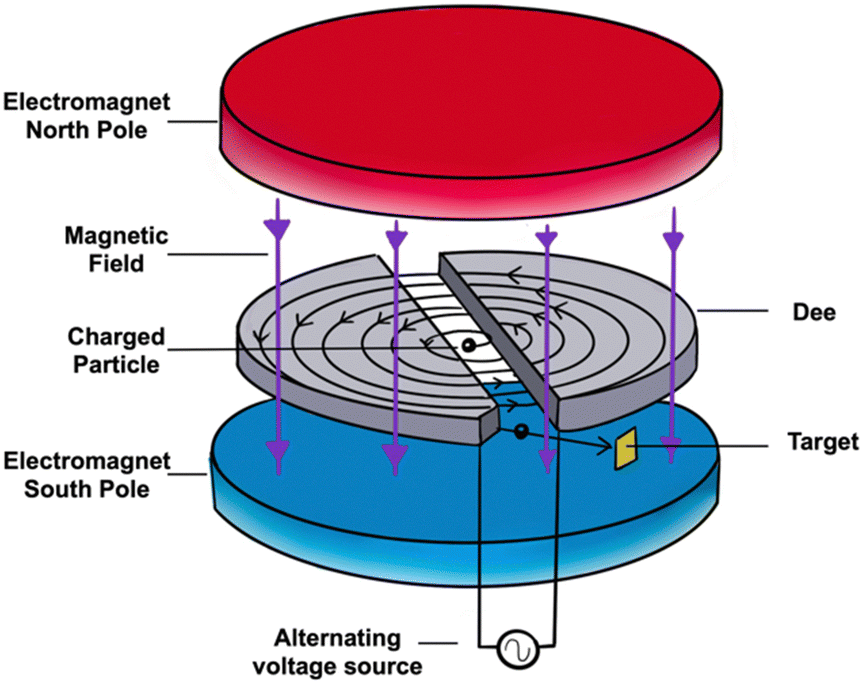




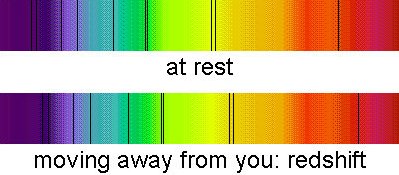
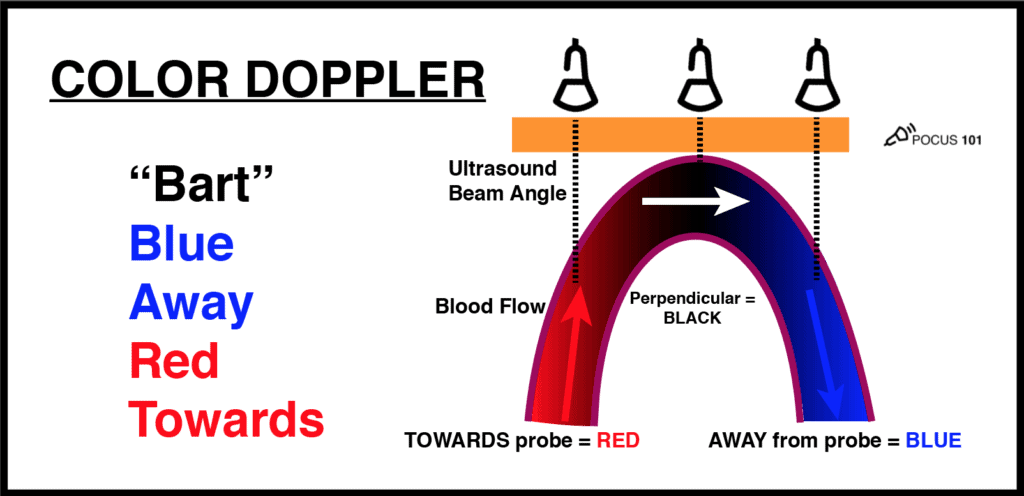



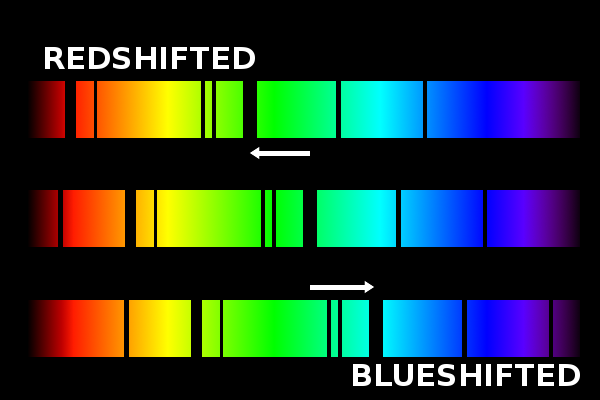





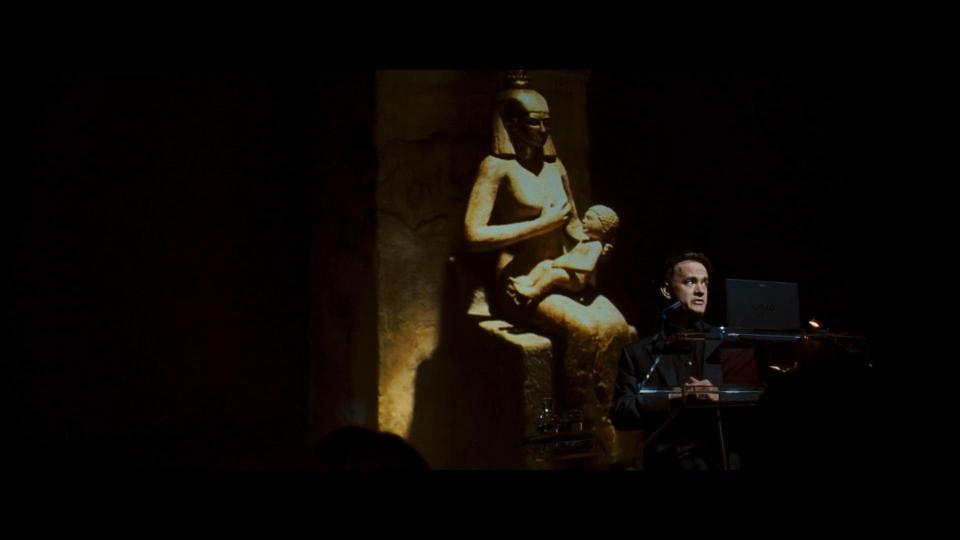

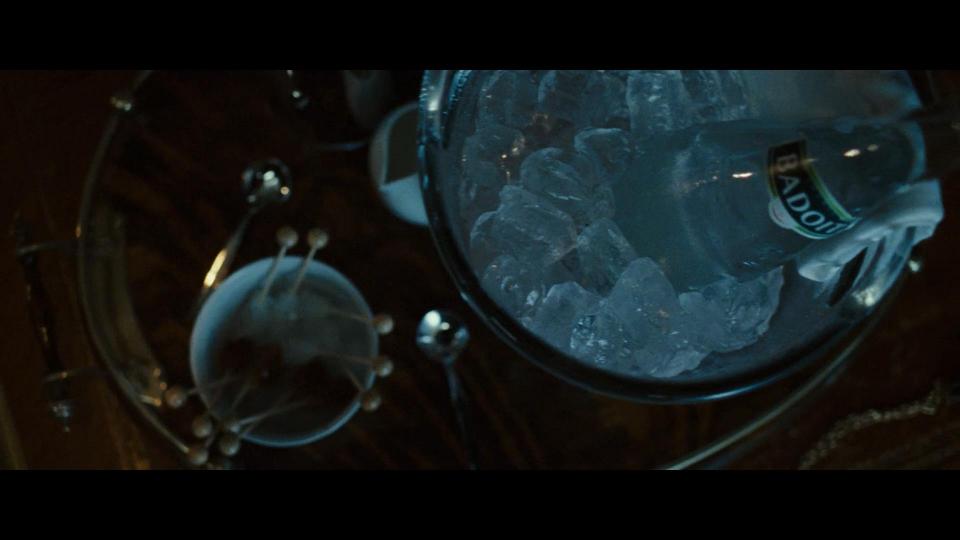
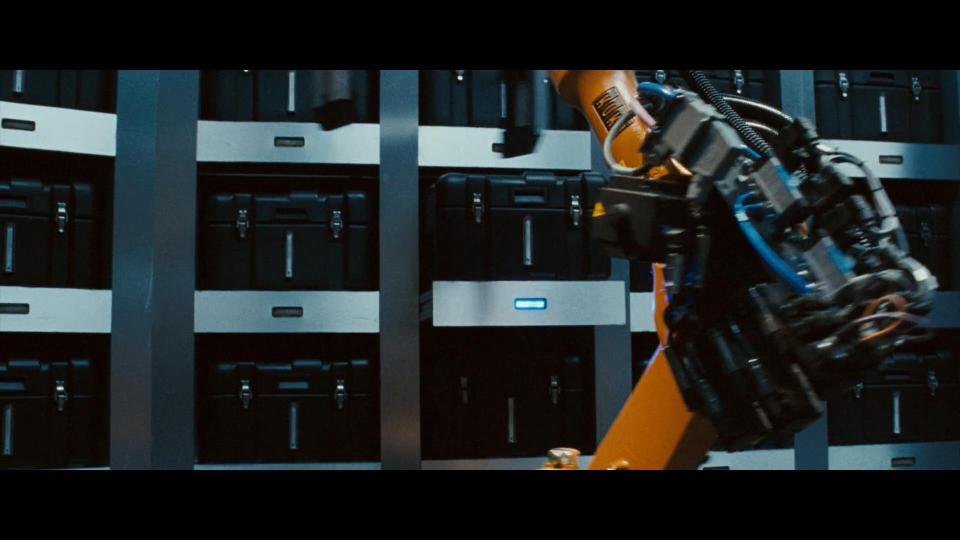
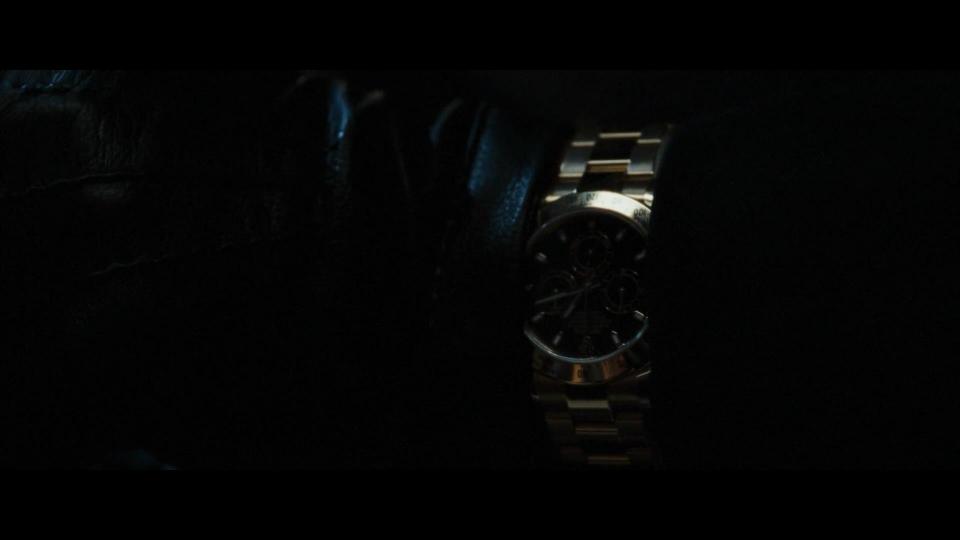
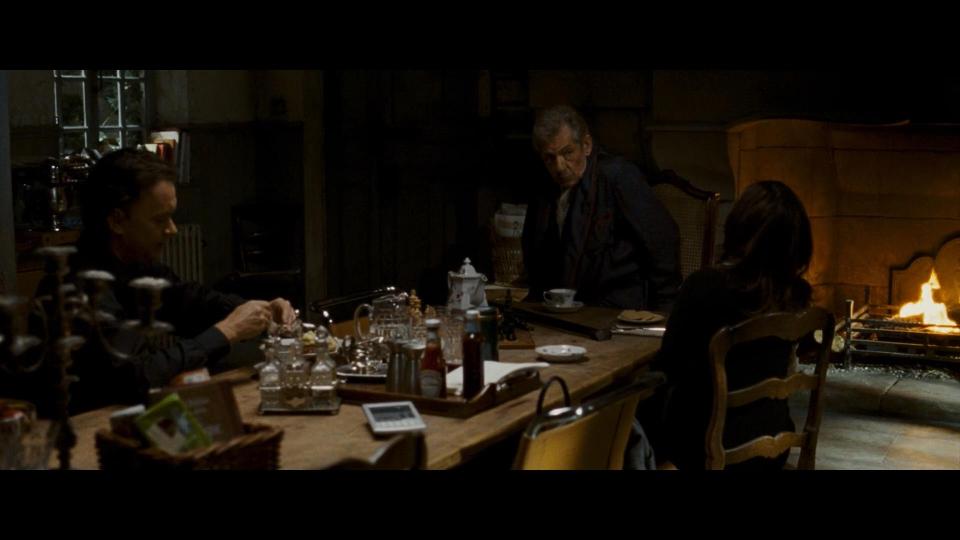
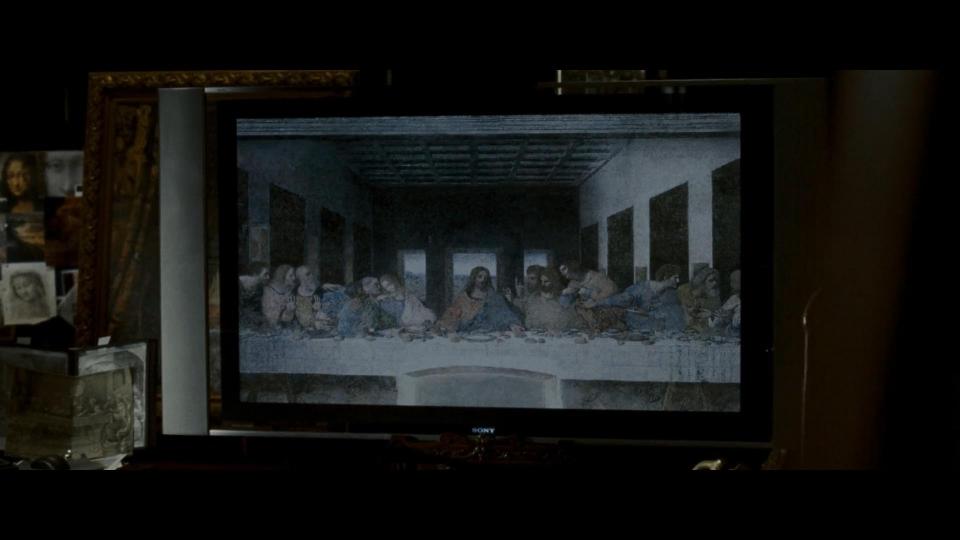
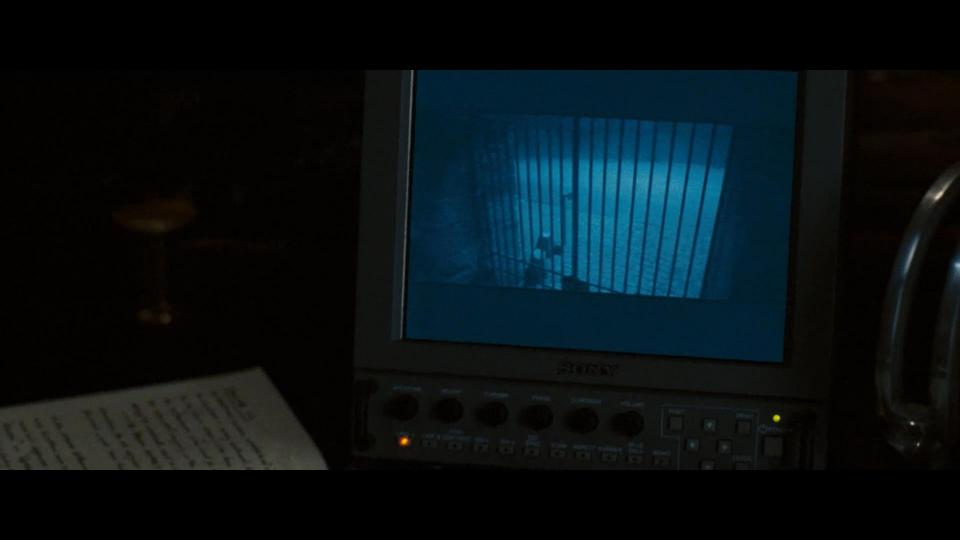
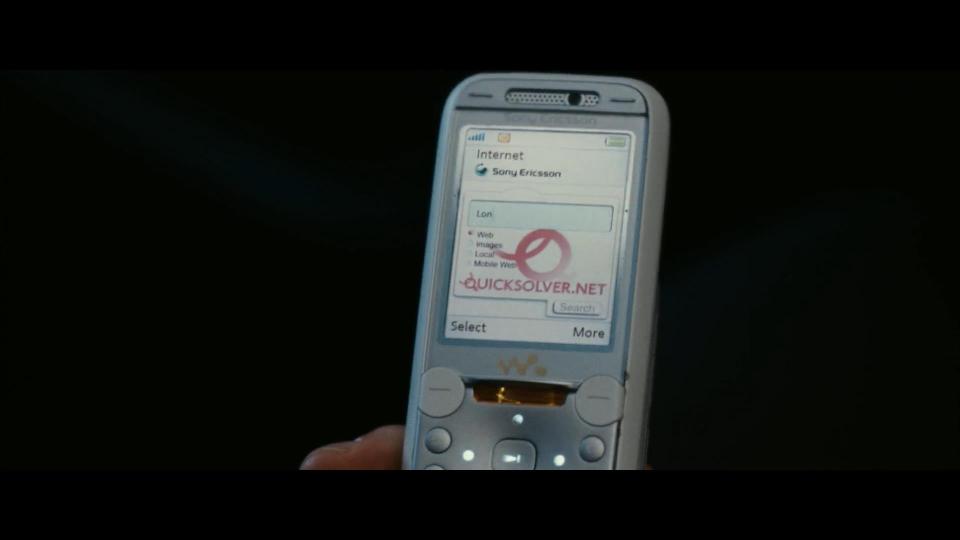
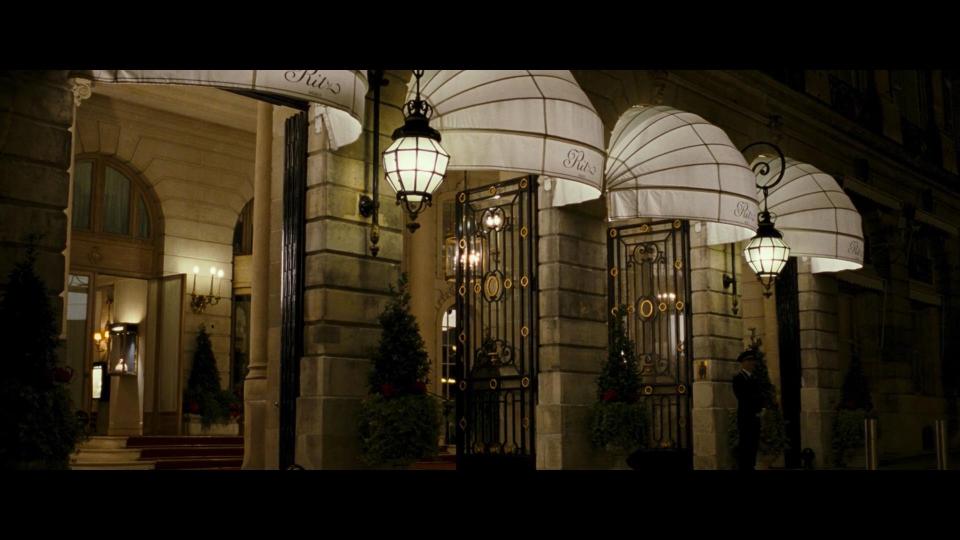
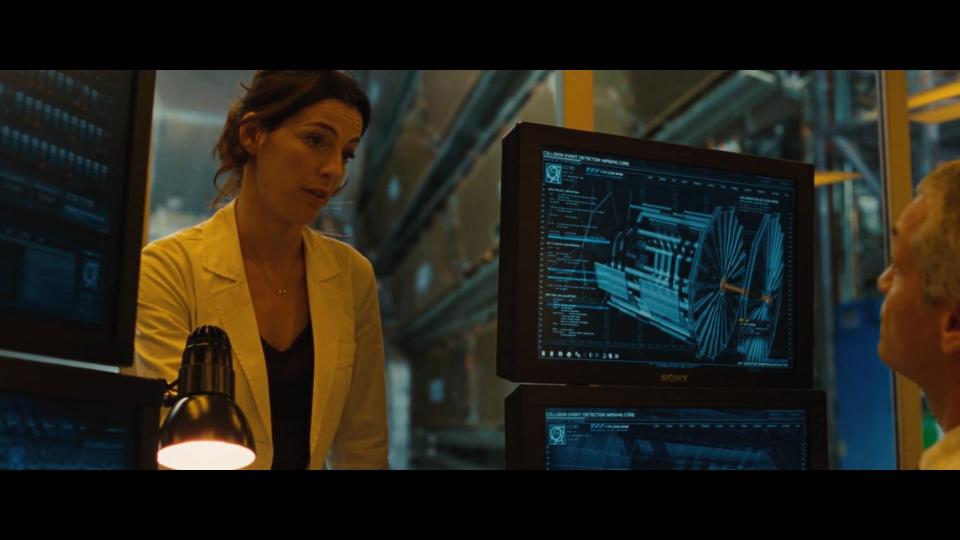
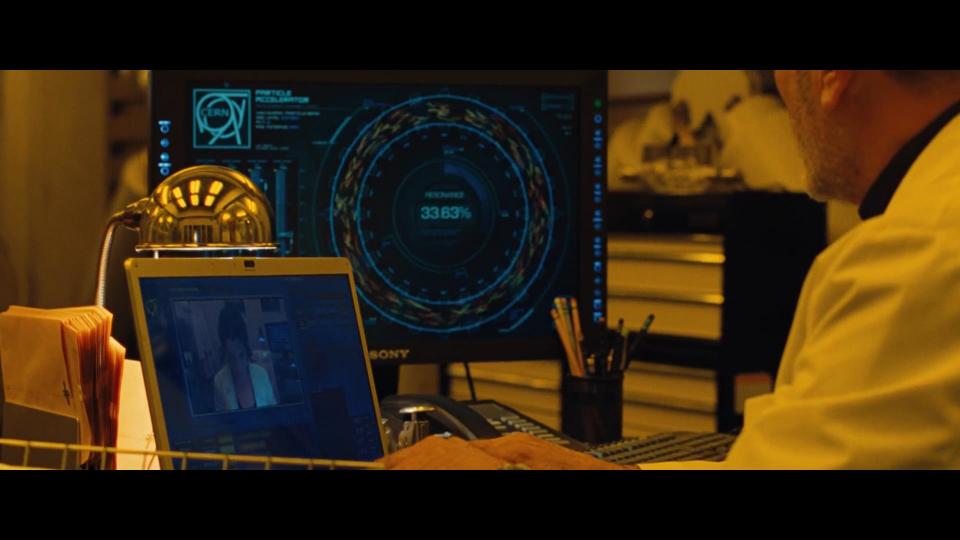




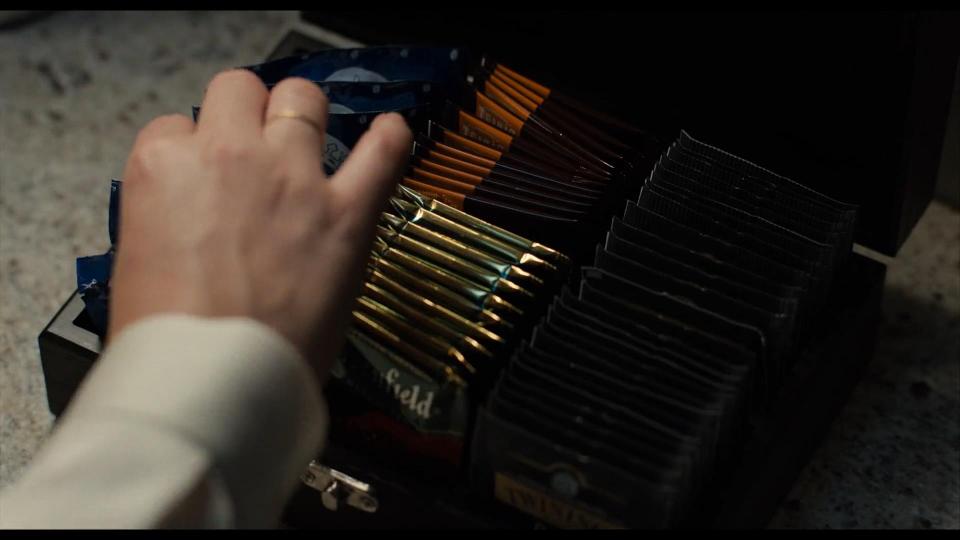
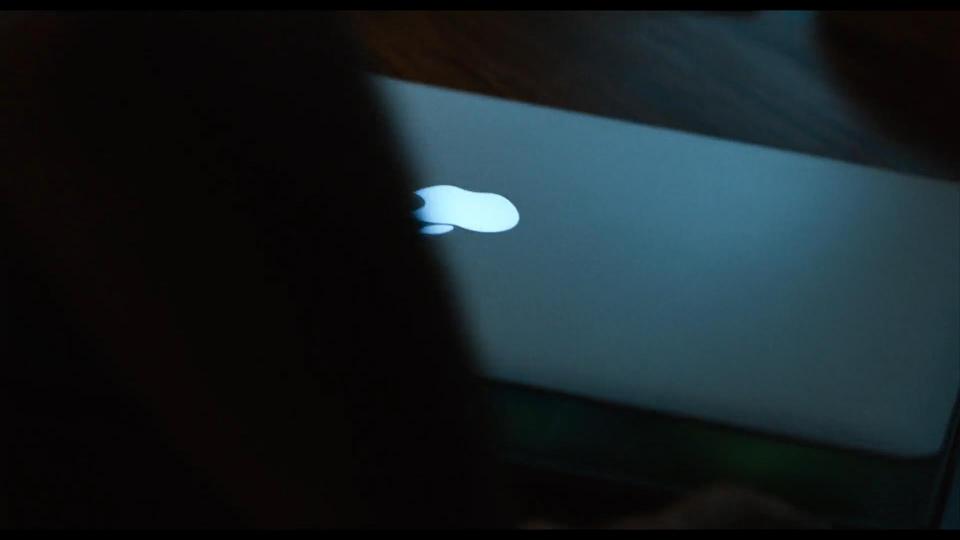
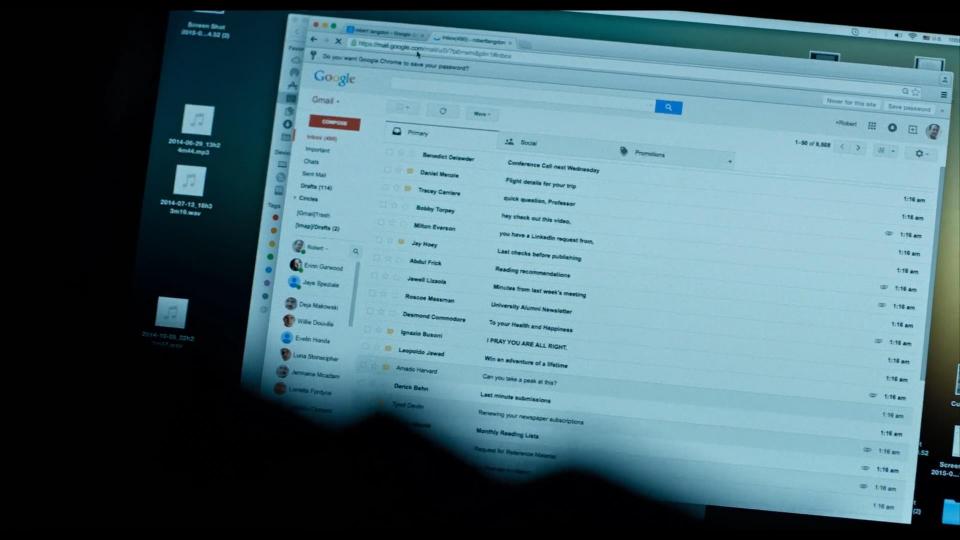

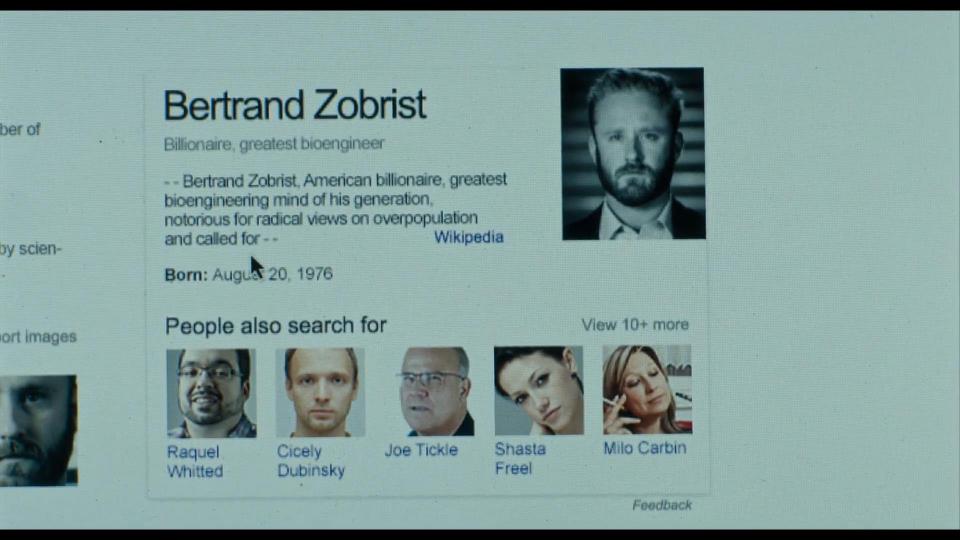
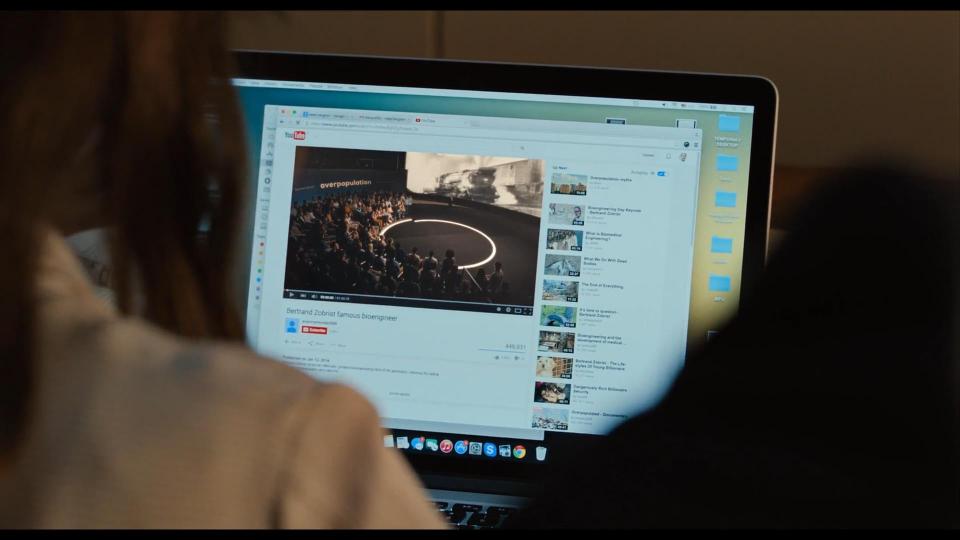
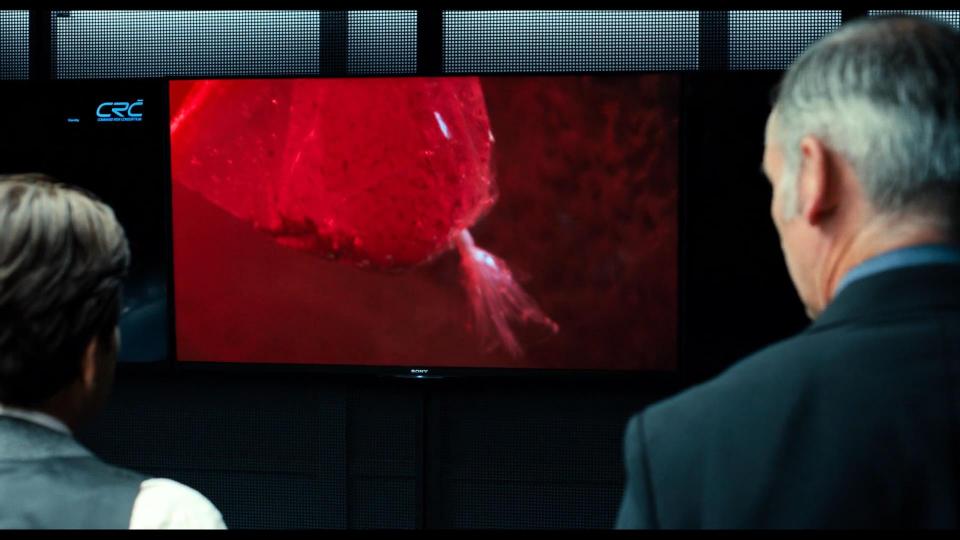

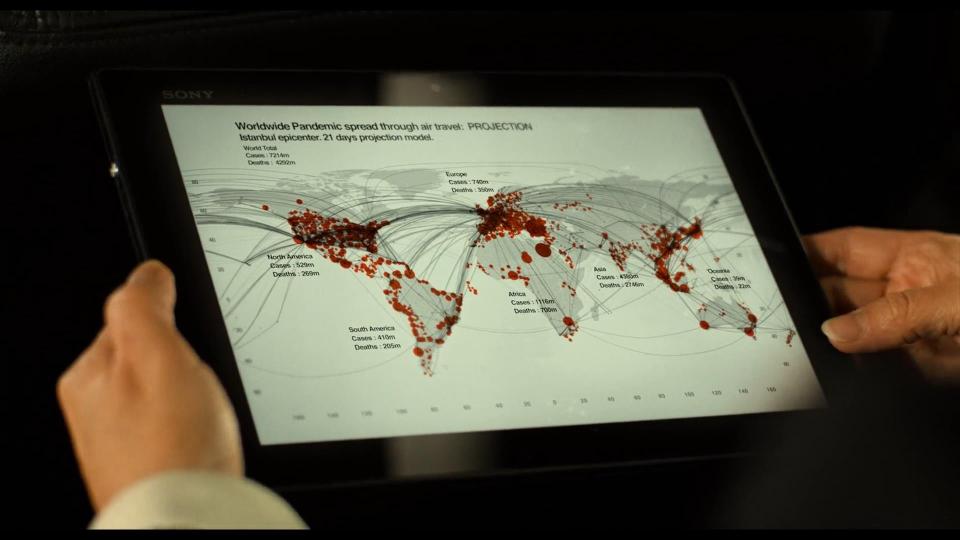








 Flip
Flip








